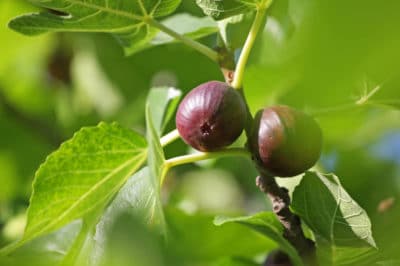Growing Figs
You’ll get much better fruit if you site and care for your fig tree properly. Figs do best in warmer climates, although different varieties may be hardy in USDA Zones from 5 to 11. Not particular about soil, they need minimal to no fertilizer. Regular watering is important for best fruit, although figs are drought-tolerant. Use netting to protect the fruit from birds.
Fig Ripening Indicators
Every fruit shows specific signs of ripeness and it takes experience to judge them properly. In the case of figs, you should check the following:
- The color of the fig.
- Texture or “give” when squeezed.
- The appearance of the fruit’s skin.
- The position of the fig on its stem.
- The taste of a fig.
Checking the Color
Figs can be different colors at maturity. Many figs are yellowish or greenish yellow when they first appear on the tree. Some – like Kadota and LSU Gold – are still green when ripe. Brown Turkey will turn purple, while Mission is nearly black. In all cases, however, the color will deepen or intensify as the fruit approaches ripeness.
The Squeeze Test
Unripe figs are firm to point of feeling hard when squeezed. This is one of those activities that takes practice. As a rule of thumb, figs will ripen about two months after they first appear. Start gently squeezing a few figs two weeks before the expected ripening date. You’ll learn to gauge the difference, especially if you do a few squeeze tests when all the other signs indicate ripeness.
The Droop of the Fruit
Immature figs stand straight up on their stems. Even as they grow larger and attain mature size, the fruit continues to point upward. Once they get close to ripening, however, the stems bend and the fruit will begin to droop. A mature fig will point toward the ground rather than the sky. Even if all the other signs say “go,” wait until the fruit droops.
Other Signs of Ripeness
In addition to the color texture and droop of the fruit, look for more subtle signs. Many figs secrete honeydew as they get close to ripeness. The skin will begin to develop a crackled appearance. If you’re still unsure, try a taste test – ripe figs are distinctly sweet. Once they’re ripe, harvest immediately, as ripe figs don’t hold on the tree.
